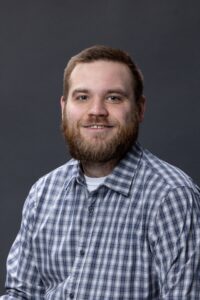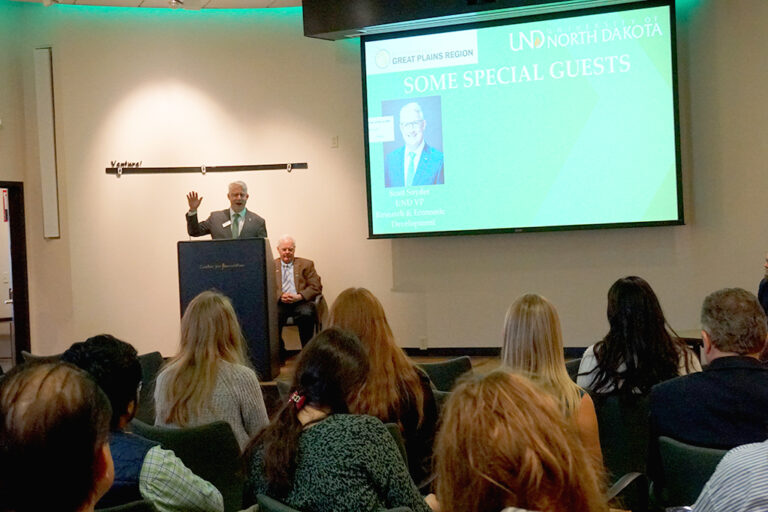To boldly grow food where no food has been grown before
UND-hosted Space Ag Conference explores using space science to grow crops on Earth, the Moon and beyond
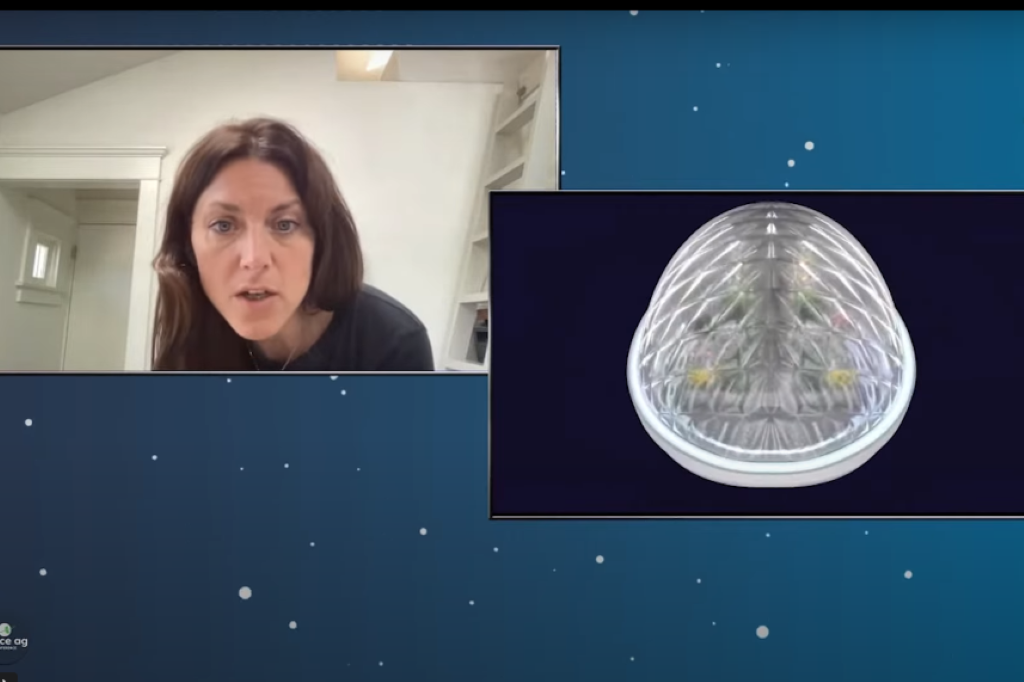
Since the 1970s, farmers have been using satellite information to improve their agricultural practices and ensure higher yields. On Tuesday, April 4, UND and Grand Farm’s Space Ag Conference 2023 proved that experts in both Ag and Space have come a long way over the years.
The conference, in its third year at UND, focuses on the convergence of space studies and agriculture and emphasizes the importance of combining the disciplines as civilization reaches to the Moon and beyond.
At the conference – held virtually due to a blizzard – 24 experts shared their latest research and innovation, proving that an increased focus on sustainability and agriculture will be a key factor to successful long-term space exploration and colonization.
UND President Andy Armacost opened the conference by asserting the importance of collaboration and innovation in the field.
“When I became president at UND, one of the very first conversations I had on research was actually with the folks at Grand Farm,” Armacost said. “The work that you’re doing is deeply embedded in my soul, and I want to make sure that the contributions that the University of North Dakota make to your efforts are significant.”
Grand Farm is a nonprofit, Fargo-based initiative designed to inspire collaboration among businesses, organizations and entrepreneurs to develop the future farm. The conference featured speakers from diverse backgrounds and sectors, including North Dakota Sens. John Hoeven and Kevin Cramer, current and former NASA scientists, academics, and experts in the private sector.
Ralph Fritsche, senior project manager for Space Crop Production in Support of Deep Space Exploration at NASA, and a person whom Grand Farm’s head of special projects, Andrew Jason, called “the father of Space Ag,” participated in a Q&A to give some of his thoughts about the future of the industry.
During the Q&A, Fritsche said we’re in a “golden era” for both academic and commercial space research opportunities while emphasizing the importance of shifting focus from space exploration to tackling the problem of growing food in space. With that in mind, he noted, there are a lot of challenges to overcome.
“I am continually torn between trying to lay out the foundational ideas that will lead us to that bioregenerative, permanent outpost on the moon,” Fritsche said, “and addressing some of the near term challenges that we have to circumvent so we can even consider getting there.
“It’s going to be a challenging time for food and nutrition,” Fritsche continued, while noting that the combination of private and public sector research will allow for this challenge to be tackled in innovative ways.
Barbara Belvisi , the founder and CEO of Interstellar Lab and another speaker who presented at the conference, had an impressive example of how to solve the complications of surviving in space’s inhospitable climate.
Belvisi showed off the Interstellar Lab’s BioPod. An autonomous climate-controlled environment that has the capacity to produce and recycle water, air, and food without any outside assistance, the BioPod promises to address some of the most complex issues of allowing life to thrive in space.
Already, the BioPods are showing immense promise. Belvisi showed pictures of the sleek pods and mentioned their capability to grow endangered orchids using the pods’ advanced technology and precise environment controls.
Now, the France-based company is expanding to the U.S. and hopes to use 3D printing technology to reduce production costs and labor needs.
Belvisi emphasized the importance of conferences such as Space Ag in creating networks of research and resources to advance the fields. “We are not many,” Belvisi said, referring to companies such as hers. “But we exist: the people who are combining agriculture and space to bring not only human life, but other forms of life to space.”
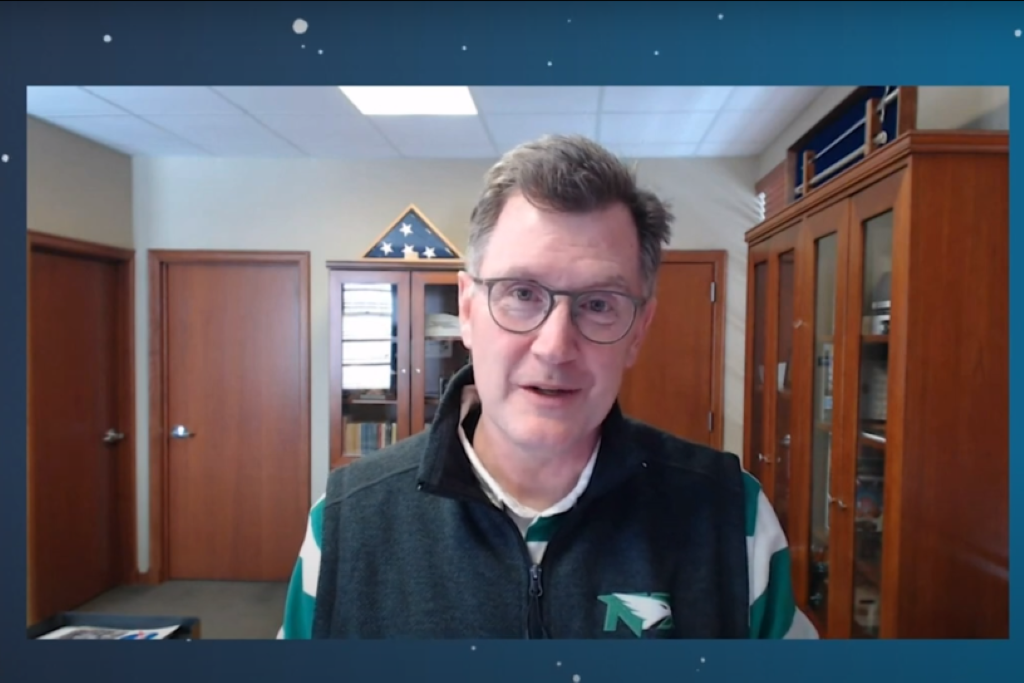
Education was another major component of the conference’s goals.
While a planned three-hour educational session for local students was delayed due to the weather, representatives from educational facilities were also present to display their methods and successes in bring space agriculture to students.
Amy Padoff, director of education at the Fairchild Tropical Botanic Garden in Miami, discussed how they are integrating educational opportunities, NASA research, and urban plant growing to advance scientific research in space while meeting the agricultural needs of Earth.
Padoff gave an overview of the organization’s Growing Beyond Earth Innovation Studio, the world’s first makerspace in a botanic garden and first public facility contributing research to NASA’s food production challenges. The project offers high school and college students access to state-of-the-art labs to experiment, learn, and develop hardware in the name of growing plants in space.
To date, over 50,000 students have participated in Growing Beyond Earth’s mission of advancing NASA’s research, with over 180 different varieties of plants being studied in classrooms and advanced growth chambers designed to mimic the environment of the International Space Station.
Several experts also emphasized that the psychological aspect of food cannot be ignored, as it is crucial for humans to thrive in space.
Kris Kimmel, founder of Humanity in Deep Space, said that it was important to recognize the need for labor in space, and that it’s going to be difficult for space travelers to function – let alone thrive – on 1,900 calories a day.
“Even though it’s going to be difficult, it’s important that we understand the physiological and psychological aspect of food,” said Kimmel. “It’s about not only allowing humans to work, but also ensuring that they can thrive in space.”
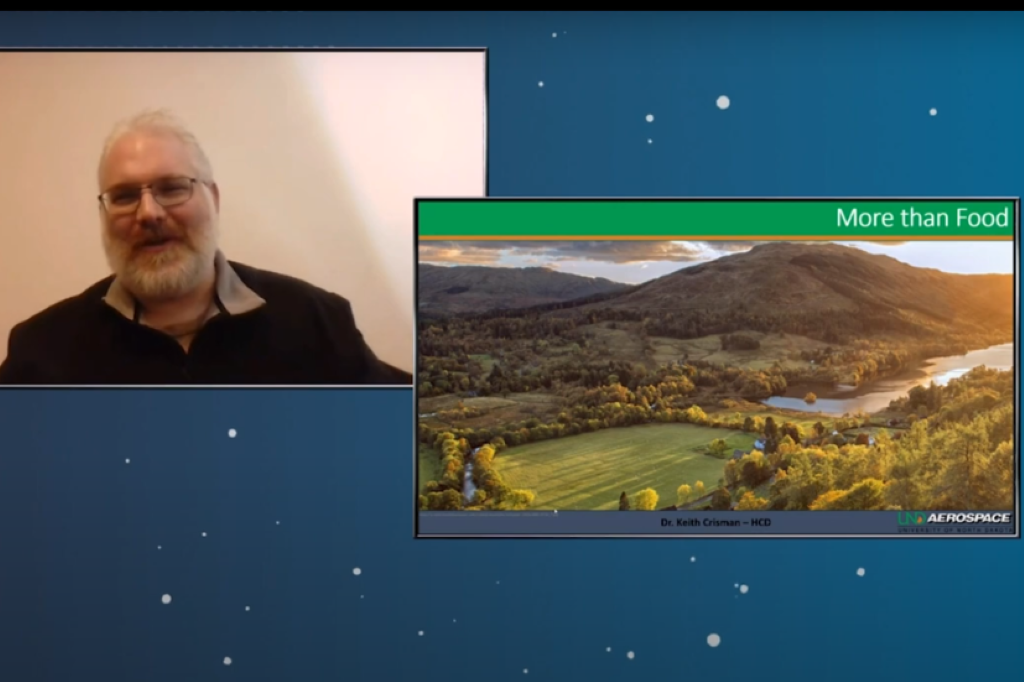
UND Professor of Space Studies Keith Crisman echoed this sentiment by referencing the Hedonic Scale of food acceptability. That’s a method to gauge the sensory appeal of food, to assess whether it meets both the psychological and physiological needs of humans in space.
“People don’t like eating the same thing over and over again, right? People like variety in texture, color and flavor,” Crisman said.
Crisman referenced the work that the work that UND has been doing at its Inflatable Lunar-Mars Habitat to research potential impacts of having live plants in the outer space environment.
When the plants were placed in the habitat, “we did see that most members of those crews enjoyed interacting with the plants in the environment,” Crisman said.
After the conference, Crisman lauded the research presented and called it “an excellent opportunity to look at what we can do as well as what needs to be done for the future of space travel.”
Crisman said that it’s important to remember that “it’s not just only the physical end of the equation, we have yet to know how humans will react when Earth is a pale blue dot amongst the stars. Humanity has spent its entire existence on a green planet, and that’s an option we won’t have in space.”
In his opening remarks, President Armacost noted the important role North Dakota schools have in advancing research in the space agriculture field.
“The intersection between UND and NDSU is very important,” Armacost said. “NDSU’s world-renowned expertise in agriculture and UND’s expertise in space studies make us a formidable pair.”
“It’s like one university, extended across space,” he continued. “To come together and partner among faculty and students to do some amazing research is truly an opportunity we can’t pass up.”
